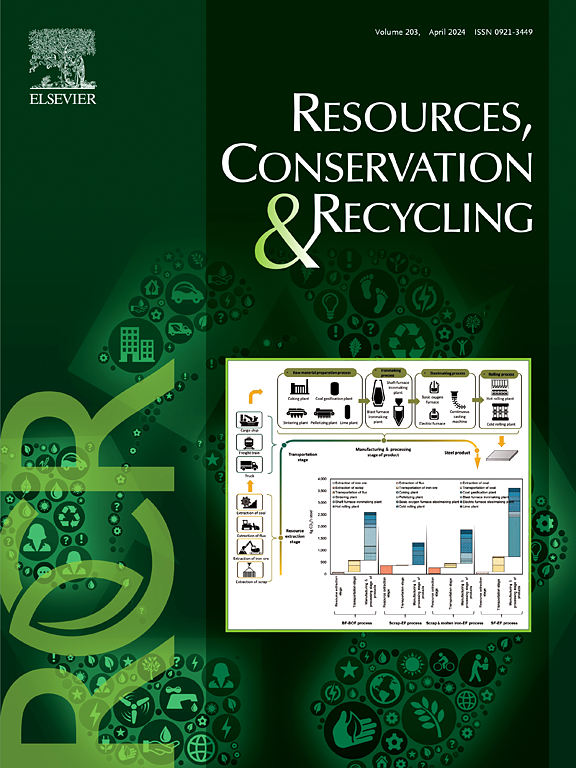通过回收行业向可再生能源过渡的途径对报废轮胎回收进行生命周期评估
IF 10.9
1区 环境科学与生态学
Q1 ENGINEERING, ENVIRONMENTAL
引用次数: 0
摘要
虽然回收技术为废旧轮胎(ELT)提供了解决方案,但该行业对不可再生资源的依赖引起了人们的关注。这项从摇篮到门的生命周期评估研究的目的是量化ELT回收为多种产品(橡胶屑(CR)、微细橡胶粉(MRP)和再生橡胶(RR))所带来的潜在环境影响。分析了包括3种产品和2种ELT能源在内的36种情景,采用了6种从不可再生能源向可再生能源过渡的电力组合情景。国内ELT生产CR、MRP和RR的全球变暖潜势分别为1.13 × 104、3 × 104和3.63 × 104 kg CO2当量,而50%的可再生能源转型使其减少了10 - 15%。此外,MRP显示了最高的土地占用和水消耗潜力。总体而言,本研究提供了轮胎回收行业支持可持续实践的当前和未来影响的整体概述。本文章由计算机程序翻译,如有差异,请以英文原文为准。

Lifecycle assessment of end-of-life tire recycling through pathways of transitioning the recycling industry to renewable energy sources
While recycling technologies offer solution to the challenges associated with end-of-life tires (ELT), the reliance of the industry on nonrenewable sources raises concerns. The objective of this cradle-to-gate lifecycle assessment study was to quantify the potential environmental impacts due to recycling of ELT into multiple outputs: crumb rubber (CR), micronized rubber powder (MRP), and reclaimed rubber (RR). Thirty-six scenarios were analyzed including three products and two ELT sources using six electricity mix scenarios transitioning the nonrenewable to renewable sources. The global warming potential due to the production of CR, MRP, and RR from domestic ELT were 1.13 × 104, 3 × 104, and 3.63 × 104 kg CO2 eq., respectively, while 50 % transition to renewables reduced them by 10–15 %. Further, MRP showed the highest land occupation and water consumption potential. Overall, this research provided a holistic overview of current and future impacts of tire recycling industry supporting sustainable practices.
求助全文
通过发布文献求助,成功后即可免费获取论文全文。
去求助
来源期刊

Resources Conservation and Recycling
环境科学-工程:环境
CiteScore
22.90
自引率
6.10%
发文量
625
审稿时长
23 days
期刊介绍:
The journal Resources, Conservation & Recycling welcomes contributions from research, which consider sustainable management and conservation of resources. The journal prioritizes understanding the transformation processes crucial for transitioning toward more sustainable production and consumption systems. It highlights technological, economic, institutional, and policy aspects related to specific resource management practices such as conservation, recycling, and resource substitution, as well as broader strategies like improving resource productivity and restructuring production and consumption patterns.
Contributions may address regional, national, or international scales and can range from individual resources or technologies to entire sectors or systems. Authors are encouraged to explore scientific and methodological issues alongside practical, environmental, and economic implications. However, manuscripts focusing solely on laboratory experiments without discussing their broader implications will not be considered for publication in the journal.
 求助内容:
求助内容: 应助结果提醒方式:
应助结果提醒方式:


